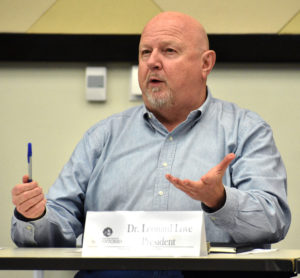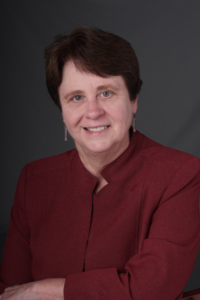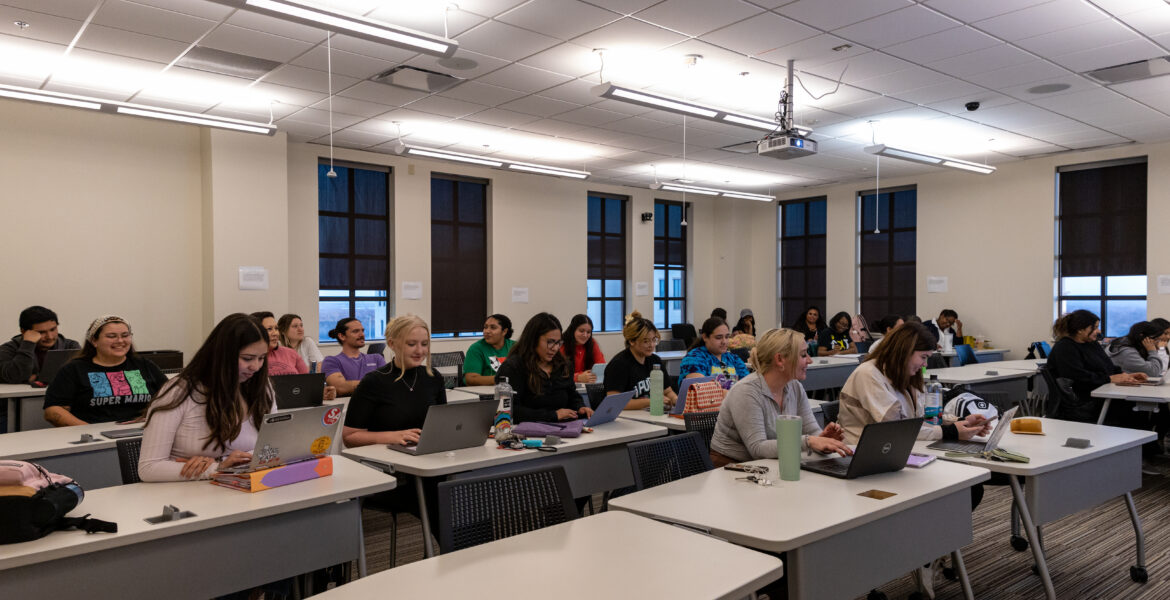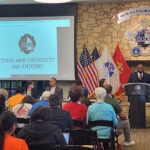The words “class optimization” — in other words, university administration resizing class enrollment — might already be familiar for some faculty at Texas A&M University-San Antonio.
Class sizes and revenue are intertwined, and compensation partly depends on that relationship: Faculty want fair salaries, but money has to come from somewhere to cover the cost. Increasing class sizes is one way to do so, and some of that talk is beginning to take place at Faculty Senate level, with the provost expressing the need for reevaluating classes that could accommodate more students.
For Dr. Leonard Love, associate professor of Strategic Management and Entrepreneurship and president of the Faculty Senate, class optimization is a complex priority at the senate, yet it carries a “lot of concern” from the faculty.

That is because not every class lends itself to larger enrollment.
“So for example, you have a class where it’s writing intensive, and that means that the instructor has to spend a lot of time grading papers — then you need a smaller class,” Love said in a Feb. 10 interview on Zoom. “There’s room there to work out something that fits with the specific class, the specific instructor.”
To do this, Love said provost Mohamed Abdelrahman is trying to establish some basic guidelines, not a set-in-stone rule, on the approach that would define which classes need the resizing.
“But that scares some faculty as maybe a first step toward a hard and fast rule,” Love said.
Love said business faculty, which he is a part of, don’t seem as concerned about it because business colleges tend to have larger classes in general. That isn’t necessarily true for other colleges.
As an example, Love said the provost set a minimum threshold of 15 students for some undergraduate classes and 10 for graduate classes but is treating it as a guideline instead of a rule, which could cause some confusion among faculty.
“It’s something that’s going to take a while to work out,” Love said.
The road to better pay for A&M-San Antonio employees is getting paved
The university is taking on another issue, pay. Better compensation is one of the last assurances former president Cynthia Teniente-Matson laid on the table prior to her departure.
There is a pool of $400,000 allocated toward faculty and staff raises this spring. Love said university administration has been accepting of giving more pay while compromising to find ways to cover that cost.
“Part of that is revenue,” Love said. “We’re dealing with some issues that are related. One of those is faculty pay. That is a very big issue.
“So if you’re paying an instructor, and they teach a section with five students, you’re not bringing enough revenue to pay for the expense of offering the class.”
Interim President Linda Schott agrees.
“So to give you one example: Because this is such a young university, and when it first started, classes were very small, right? As it’s grown, we’ve kept classes really small — 20. So a lot of classes of like 20, 25 maybe,” Schott said in a Feb. 10 interview.
“That is good, but it’s not ultimately financially sustainable … We just don’t bring in enough revenue to cover the faculty salaries to provide the support and everything that’s needed,” she added.
The resizing is meant to be incremental.
“Not a lot; we’re not talking about going to big lecture halls of 100,” Schott said. We’re talking about, ‘can we go from 20 to 30? can we go from 25 to 35?’”
It will be a long-term project, but it is one she feels confident about starting now, with faculty having a “huge role” in saying what’s appropriate, Schott added.
“So we’ve just started that discussion because I know that the next president will be focused on making sure that we’re making budget and, you know, (making) good use of the resources the state and the students and their families provide to us,” Schott said.
Working toward fair pay was stagnant, inconsistent for A&M-San Antonio employees
Love said he thinks there’s only been one actual pay raise in the 11 years he’s been at this university. This compounded with inflation and the fact A&M-San Antonio is a smaller — though growing — institution, makes matters worse.
Compression is an issue. At this university, it happens when faculty is hired when the market rate is lower, as would be the case during the initial years of A&M-San Antonio. As the years go by and new faculty is hired with a salary that reflects a higher, current market rate, the older faculty is left behind with their old salaries. This is true for both faculty and staff.
“There’s been a general, unwritten agreement — I suppose you could call it — among the faculty and staff that, ‘okay, we understand we might not get a raise this year because we’re growing, and we need the money for something else,’” he said. “It’s just gone on a long time and become a much bigger issue.”

Love said Abdelrahman understands that, noticing his interest to work on it.
The provost did not respond for comment by deadline.
Love said the pay raises this spring are a good start to what should be a multi-year process, four to five years at minimum, to set fair salaries.
“We’ve got commitment from the provost in that regard; we have one from the interim president to continue the process, and we expect to have one from the eventual new president,” Love said.
Schott said she was happy to know an ongoing, thoughtful process on compensation was taking effect as she became interim president in January.
“So we’re near the end of that,” she said. “People are starting, I think, in February and March to actually see those increases to their paychecks.
“I’m totally supportive of that,” she said.
Love said the Faculty Senate decided faculty paid the least should be the priority when allocating $200,000 out of the $400,000. The other half is for staff.
Merit pay is meant to further cushion pay for standout employees
In addition, the university has earmarked another $200,000 for merit pay. Love said three factors are considered to decide who gets the 2% merit raise — teaching, research and service.
“Every year, we do an annual evaluation,” he said. “We compile a report, it goes through our chair, our dean and to our committee at our college that evaluates us on those three criteria.”
While teaching is self-explanatory, research stands for any academic research faculty undergoes to stay current in their field while service highlights activities done for the school, such as committee work.
Ultimately, Love said conversations about class optimization and compensation with administration could appear adversarial, but they are not.
“They really aren’t,” he said. “Not to say that we always agree with administration or vice versa, but it’s simply a matter of … ‘work out things for the university,’” Love said. “We may not always have the same perspective on things, but for the most part, particularly, again, with the changes we’ve had recently, it’s been a lot more productive and harmonious, our relationship. And communication is improving. It needed improvement, but it is improving.”
For the interim president, strategizing improvement depends on adapting to demand
Schott said it is essential to keep up with evolving technologies.
She said some fields can lose relevance, such as foreign languages because of ease of access to translators. Depending on demand, university resources could be shifted to other disciplines. It’s a type of outlook one can prepare for, one encouraged at the Faculty Senate at its February meeting.
“And that would be the provost working with faculty on things,” Schott said.
It does not mean, however, that any program is currently disappearing at A&M-San Antonio, Schott emphasized.
“It’s a young university, and there are good processes that can be put in place that would save the university grief 10, 20 years from now,” Schott said of the importance of being prepared for the loss of a program, should it ever come to pass.
Ultimately, it’s all about keeping the engine running at A&M-San Antonio.
“How do we keep this up, right?” Schott said. “How do we keep paying our employees fairly? And can we get to the point where we even get them completely to market rate? But we’re doing the best we can right now, and that’s great. The university deserves credit for really making that effort.”
Schott said it’s necessary, even, to make that effort because employees have plenty of good alternatives out there.
“And they can leave us and go somewhere else,” she said. “I was surprised to learn that 60% of our staff have been here two years or less. That’s a lot of turnover. Now, we’re a young university, but it’s still a lot of turnover.”
Though the reason is not clear on why — whether it was because of the pandemic or something else — Schott said proper investment in employees matters.
“We want to be able to hire great people and invest in them and keep them, right?” Schott said. “So this compensation is a piece of that.”







